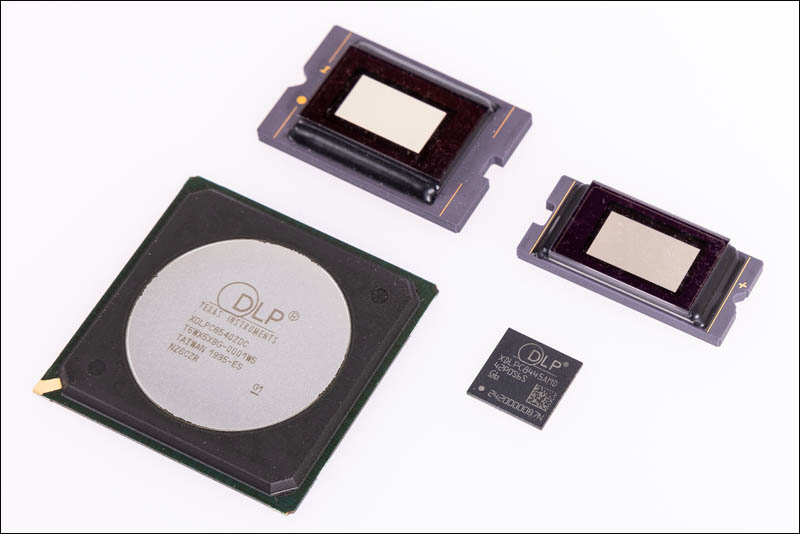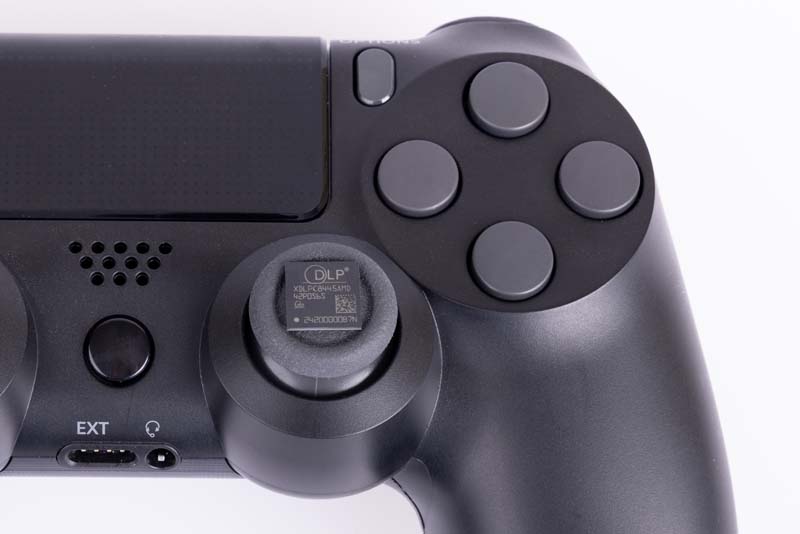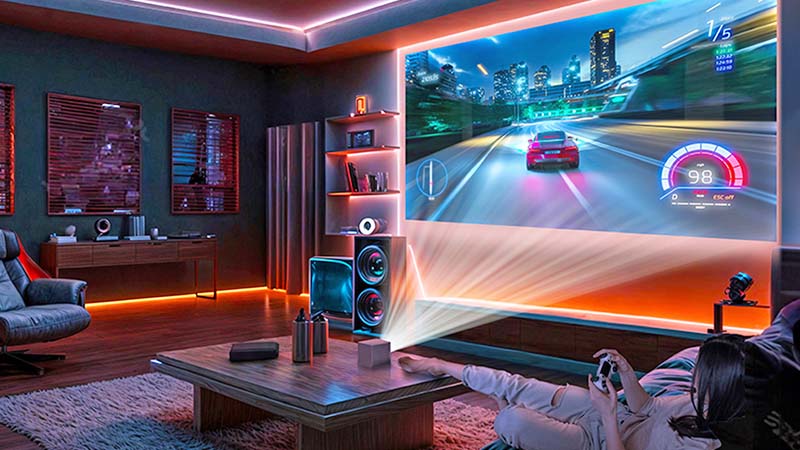Texas Instruments has announced a new 4K DLP chipset that should vastly reduce projector size and power requirements while delivering low-latency/high frame rate performance for the next generation of gaming projectors.

The three-chip set, which includes an updated 0.47-inch digital micromirror device (DMD), a power management integrated circuit driver (PMIC), and most critically, a more advanced DLP display controller, has been in development for several years and was driven by TI's desire to create projection displays that rival the best gaming monitors, as well as to support development of advanced augmented reality glasses.
The new DMD, model DLP472TP, retains the same 1920x1080 native HD mirror array as the prior generation 0.47-inch chip, though in a smaller overall package that will save internal real estate inside the projector. It still requires rapid four-phase pixel-shifting to achieve full 3840x2160 UHD resolution on screen, a process that has already proven itself to be highly effective and largely indistinguishable from native 4K in dozens of projectors to date.

Most notable, however, are the advances in the new display controller, model DLPC8445. Breakthroughs in the controller architecture combined with TI's utilization of its latest advanced processing techniques has led to a significant reduction in gate count within the chip. One benefit is is a huge reduction in size from 31x31mm to 9x9mm—about a third of an inch or the width of a pencil eraser—for a 90% reduction in total package size for the chipset. Power requirements have also dropped thanks to the controller and new power management chip, TI says, adding that this is the first TI chipset designed for use with battery-operated laser projectors.
Critically for gamers, the new chipset is also being hailed as the first to offer compatibility with VRR, or variable refresh rate—a gaming feature that helps keep the display in sync with the signal and seeks to eliminate image tearing and stuttering.

Extremely low latency—quoted as "submillisecond"—and high frame rates up to 240Hz will be supported, TI says. However, the initital rollout will still only support 4K at up to 60Hz and does not address the long-running lack of DLP's compliance with 4K/120Hz signals available from the latest game consoles. Many gamers and enthusiasts are not aware that even DLP projectors claiming late generation, wide-bandwidth HDMI 2.1 ports that support 4K/120 signals must downconvert to 4K/60 for on-screen display because of DLP processing limitations. TI officials said a dual-controller configuration using the new tech that would fully support 4K/120 is in development, though they could provide no timeline.
In the meantime, the new chips are already available in quantities sufficient for engineering development, TI says, and projectormakers have supposedly been working with them for some time now. The first products to utilize the revised chipset could appear late this year.
Have a Projector Question?
Join our free ProjectorCentral Facebook Group to get answers quickly.
Check it Out
If TI is announcing new DLP tech, what about the 0.94” chip that was reported to be in the Hisense 8K UST way back in its CES debut in January? That had 4K native support according to the reports, but I haven’t heard anything since. Is it possible that there will be more information at CEDIA in September?
The 8K Samsung UST has also been vaporware other than its debut at CES. I’m not sure which chip it was using based on reports, but you’d think it would be similar to the Hisense, or maybe this chip?
Do you know any more about those DLP chips that you can share?
1) Noise! e.g. HP has a water cooled projector, I hope this trend continues. Ideally fully passively cooled lik TV! But I am not only talking about fan noise. I had a projector that made a high pitched noise on bright scenes. So Chip and lightsource driver should be noise free! You will lose from large LCD screens otherwise, unless the gamer must have 100"+ screen which I doubt is a large market. 2) Brightness. Do the research on the dynamic range of eyes and try to at least cover this in darkened rooms but ideally also in illuminated rooms and keep pushing until it is reached but without loss to noise performance or image quality performance. 3) Refresh rate. Anything below 120Hz is unacceptable. Nobody wants to go back to having the 60Hz CRT flicker after a night of gaming still afterglowing when you close your eyes. 4) Motion smoothing. While for gaming not required, you can bet that these projectors will double as a movie device and none of the source materials I have seen from streaming services are free of choppy scenes where you can see the slideshow effect. My Oled does a decent job of reducing this effect but it still occurs. My beamer does not and it is very obvious. 5) placement. In case of UST, as close to wall as possible, in case of long throw don't cheap out on optical zoom adjustments. 6) Focus on providing the best image quality and dump all extra features like supporting netflix and such, especially for a gaming device, the xbox/playstation are excellent multimedia devices and will outperform any onboard stuff. Just a good HDMO2.1 or Display port inteface and power and perhaps the ability to mirror a device (like phone/laptop) for quick share amongst friends.






